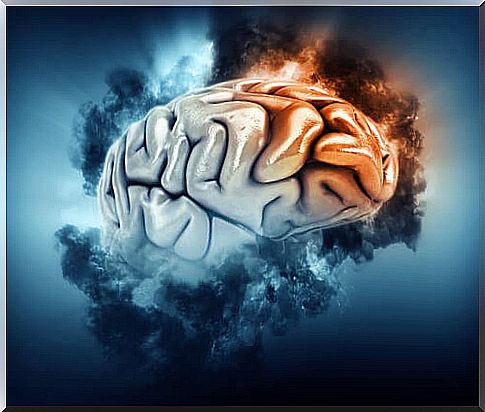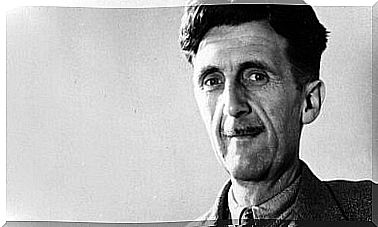Frontal Lobe Epilepsy: Origin, Symptoms And Characteristics

Frontal lobe epilepsy originates in one of the most important areas of our brain. Thus, despite the fact that this brain disorder is the second most common, just after seizures focused on temporal areas, it must be said that we still do not know everything about this condition. Often, it presents with psychiatric disturbances, movement problems and even sleep disturbances.
The fact of this evident symptomatic complexity is basically due to one aspect: its location. The frontal lobes are responsible for such relevant processes as voluntary movement, conscious thought, learning, speech, our personality, behavior, etc. The impact of epileptic seizures, as we can imagine, can be very striking.
There is also another great added difficulty. On average, seizures in this area are very brief and often occur at night. Therefore, the diagnosis is not always easy: it is often confused with sleep disturbances or other psychiatric conditions.
Let’s see however more data below.

Frontal lobe epilepsy: definition, symptoms and characteristics
As we well know, epilepsy is a characteristic brain disorder because the person suffers from a series of seizures for a certain time. These seizures are caused by abnormal activity of neurons.
For its part, in the case of frontal lobe epilepsy, these alterations in neuronal interconnection are concentrated in the frontal lobes, one of the most relevant areas of our brain.
What are the symptoms?
Frontal lobe seizures are usually quite brief and recovery is immediate. Sometimes, this disorder can begin with a simple movement of the eyes, the face and even the involuntary movement of the legs or arms. Now, there is a characteristic fact: they are usually experienced, almost for the most part, at night.
- Although they are brief seizures, they can appear with high frequency. There are cases of up to 50 crises a day.
- During seizures, the patient may involuntarily verbalize words.
- In some cases, the movements can be very striking. In these situations, the seizures are affecting the motor areas of the frontal lobes, so that the person can kick, hit, simulate riding a bicycle, etc.
- There is another important fact. As Dr. Eduardo Palacios, from the Hospital de San José in Bogotá explains to us in a study, in the past, frontal lobe epilepsy was confused with a psychiatric problem. The reason? At times, patients may scream, experience fear, euphoria, hallucinations, psychotic behaviors, etc.
Thus, a large number of processes related to our personality, language, behavior are concentrated in the frontal lobe. .. Let us remember, for example, the case of Phineas Cage and what a lesion in this area of the brain meant for this famous patient.
What is the origin of frontal lobe epilepsy?
Frontal lobe seizures, or frontal lobe epilepsy, can be due to multiple factors. The most common are the following:
- Abnormalities in the frontal lobes of the brain.
- Cerebrovascular accidents
- Infections (meningitis, brain abscess, encephalitis …)
- Traumatic injuries
- Presence of a tumor.
- Scarring in a part of the brain caused by a past injury.
Finally, it is important to note that there is a very specific type of epilepsy. It is autosomal dominant nocturnal frontal lobe epilepsy, in which case, there is a genetic factor whereby people have a 50% chance of inheriting it from their parents.

Treatment for frontal lobe epilepsy
As we have pointed out, it is not always easy to make a correct first diagnosis when a patient suffers from frontal lobe epilepsy. Sometimes crises are very brief and arise at night. There are changes in mood or movements are experienced are mild accompanied by unexpected somatosensory sensations, such as temperature changes, chills, etc.
As a result, there are people who come to their primary care center expecting to receive treatment for their mood swings and sleep problems. Thus, when these symptoms do not resolve, it is when other diagnostic tests such as an MRI are carried out. It is then when the problem is detected and that phase begins where we try to give the patient the best answer . They are usually the following:
- Drugs. There are different types of epilepsy, and most require lifelong drug treatments to reduce seizures. However, it is known that between 30 and 40% of people with epilepsy do not respond to medications. In these cases, surgery is recommended.
- Surgery in frontal lobe epilepsy. Studies such as those carried out in the Department of Neurology at Dartmouth University indicate that surgical intervention is especially effective in people under 18 years of age. The success rate is very high. For adults, the probability that the surgery will be effective is 70%.
Therefore, one thing that remains clear is that we need new treatments and clinical approaches to treat this neurological disorder. According to Dr. Lara Jehi, from the Cleveland Clinic, the ideal is to detect this type of epilepsy as soon as possible, since early interventions are when better results have been achieved.









